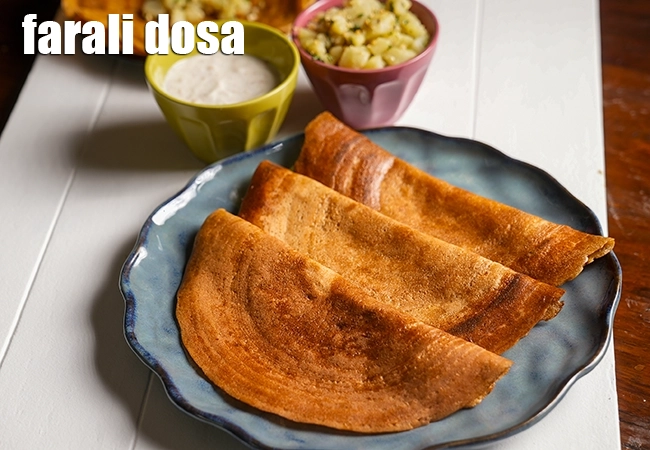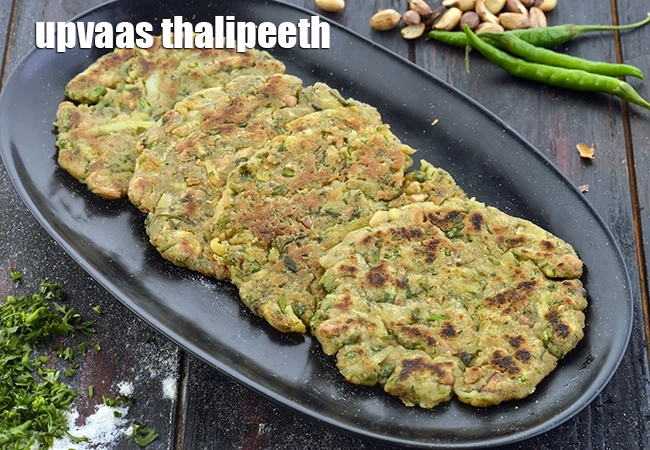Rajgira Flour

Table of Content
What is rajgira flour, ramadana flour, amaranth flour, uses, benefits, recipes?
Rajgira flour, also widely recognized as Amaranth flour or Ramdana atta in India, originates from the tiny seeds of the amaranth plant. Although often perceived as a grain, these minuscule powerhouses are botanically classified as fruits. This ancient pseudo-cereal boasts a rich history spanning thousands of years, cultivated initially by Aztec and Inca civilizations before establishing its significant presence in Indian culinary and religious traditions. Its widespread acceptance in India has led to its deep integration into the dietary habits of millions, particularly during specific religious observances.
What distinctly elevates Rajgira flour, especially within the Indian context, is its pivotal role during fasting periods (vrat or upvas). Unlike conventional cereal grains such as wheat, Rajgira is categorized as a "non-cereal" food, thus permitting its consumption during religious fasts like Navratri, Ekadashi, and other celebratory events. The term "Ramdana" literally translates to "God's seed," emphasizing its sacred connection and establishing it as a favored ingredient for preparing diverse dishes consumed during these solemn observances.
Beyond its religious importance, Rajgira flour stands out as a nutritional powerhouse. It is inherently gluten-free, rendering it an outstanding alternative for individuals with celiac disease, gluten sensitivity, or those preferring a gluten-free diet. It features a high protein content, encompassing all nine essential amino acids, which makes it a complete protein source—a rarity among plant-based foods. This attribute renders it particularly valuable for vegetarians and vegans aiming to fulfill their protein requirements.
The health benefits of Rajgira flour are further highlighted by its abundant profile of essential minerals and dietary fiber. It serves as a significant source of calcium, vital for bone health, and iron, indispensable for blood production and preventing anemia. Furthermore, it provides magnesium, phosphorus, and other micronutrients that bolster diverse bodily functions, including metabolism and immune response. Its substantial fiber content assists digestion, fosters gut health, helps stabilize blood sugar levels, and promotes satiety, thereby benefiting weight management and heart health by aiding in cholesterol reduction.
Throughout India, Rajgira flour is utilized in a wide spectrum of culinary preparations, demonstrating its remarkable versatility. During fasting periods, it is frequently made into unleavened flatbreads such as Rajgira Roti or Paratha, often incorporating mashed potatoes for texture. Other cherished fasting delicaciesinclude Rajgira Puri, Rajgira Kheer (a sweet pudding), and Rajgira Ladoo (sweet balls crafted from popped Rajgira seeds). In regions like Goa, it is employed in making Satva, Pole (dosa), Bhakri, and even Ambil (a sour porridge).
In modern Indian kitchens, the popularity of Rajgira flour is extending beyond conventional fasting foods, driven by rising health consciousness. It is routinely integrated into everyday cooking, valued not only for its gluten-free attribute but also for its remarkable nutrient profile. It features in health-conscious breakfast options like Rajgira Upma, various savory snacks, and even contemporary baked goods. Its mild, nutty flavor positions it as a versatile ingredient for an array of dishes, spanning from traditional to innovative, thereby cementing its standing as a superfood within India's rich and diverse culinary landscape.
Also known as
Amaranth flour
How to select rajgira flour, ramadana flour, amaranth flour, rajgira ka atta
• Rajgira flour should be clean, dust-free and without any infestations or foul odor.
• It is better to opt for organic grains and flour, if possible.
Culinary Uses of rajgira flour, ramadana flour, amaranth flour, rajgira ka atta
• The rajgira flour is usually made into chappatis, Rajgira parathas or rotis and served with vegetables.
• Rajgira is flavoured by the gluten intolerant and is often cooked as porridge to be eaten alongside other foods.
• Rajgira flour is made into flatbreads, including thick, leavened Farali dosa and thinner, unleavened pancakes.
farali dosa recipe | faral dosa | sama rajgira dosa | rajgira dosa

• One can also make chikki (sweet bar) or ladoos with popped rajgira seeds.
• In Goa, rajgira is very popular and satva, pole (dosa), bhakri and ambil (a sour porridge) are commonly made.
• Rajgira and Oat Bran in mint-flavoured buttermilk is a healthy breakfast option.
upvaas thalipeeth recipe | rajgira faraali thalipeeth | Maharashtrian upvaas thalipeeth |

How to store rajgira flour, ramadana flour, amaranth flour, rajgira ka atta
Store rajgira flour in an airtight container and keep it in a cool and dry place.
Health benefits of rajgira flour, ramadana flour, amaranth flour, rajgira ka atta
A Valuable Source of Protein : Protein can be coined as ‘growth nutrient’. It is required for the growth and maintenance of tissues. It helps repair cells and boost their function. In fact not only muscles, but hair, nails and skin all are made up of proteins. This nutrient also assists in hormone balance, transport of oxygen and building our immune system.
Amaranth seeds, rajgira abounds in this key nutrient. ½ cup of amaranth seeds provides 14.7 g of protein. This much protein is enough to give a feeling of satiety for long hours and avoid unnecessary weight gain by way of bingeing on junk foods like chips, pasta, burger, biscuits etc.
This ability of curtailing hunger is also probably one of the reasons why it is often used in fasting days.
2. Enhances Bone Strength : Calcium teamed up with protein and phosphorus is a crucial mineral essential to prevent demineralization of bones, especially as you age. Including calcium rich foods in your diet is a must to maintain bone strength and avoid fractures.
Yes it is true that as we age you need more calcium, just for the fact that we tend to lose bone mass with ageing. Rajgira is an ingredient which can lend a good amount of calcium to your diet. You would be amused to know that 1 cup of amaranth seeds are sufficient to fill your entire day’s requirement of calcium and 55% of your daily requirement of phosphorus.
All you need to do is explore its use in cooking keeping your food habits in mind. We have a range of recipes using rajgira you can try your hand at.
3. Lowers Blood Cholesterol Levels : As good as the protein level of amaranth is, so is its fiber content. 100 gm of amaranth seeds provide a whooping amount of 9.6 g of fiber.
The high fiber in general can help bind excess cholesterol and excrete it from the body, thus maintain healthy levels of cholesterol. It is known that too much cholesterol can build up in arteries thus blocking them and lead to increased risk of heart problems and strokes.
Also check detailed list of Low Cholesterol Recipes
Click here to know more about the 9 Super Benefits of Rajgira Flour, Rajgira, Amaranth Seeds.
Nutritive Information for Rajgira flour / Amaranth flour:
½ Cup of amaranth flour, rajgira flour is about 100 grams
RDA stands for Recommended Daily Allowance.
Energy - 319 calories
Protein – 14.7 g
Carbohydrate – 60.7 g
Fat – 1.9 g
Fiber – 9.6 g
Minerals:
510 mg of Calcium = 127.5 % of RDA (about 1000 mg)
397 mg of Phosphorus = 66.1% of RDA (about 600 mg)
11 mg of Iron = 55% of RDA (about 20 mg)

Related Glossary
Follow US
Recipe Categories
- Vitamin B12 Cobalamin Rich Recipes 33 recipes
- Low Calorie, Weight Loss Indian Recipes 421 recipes
- Low Cholesterol Indian Recipes 308 recipes
- Healthy Indian Breakfast 373 recipes
- Indian Diabetic recipes 559 recipes
- Indian Pregnancy recipes 461 recipes
- Zero Oil Indian Recipes 133 recipes
- Iron Rich Indian recipes 268 recipes
- Healthy Indian Acidity recipes 137 recipes
- Healthy Sabzis 108 recipes
- Indian Healthy Veg Snack 276 recipes
- Healthy Heart Recipes 415 recipes
- Healthy Veg Indian Soups 74 recipes
- Calcium Rich Indian Recipes 373 recipes
- High Blood Pressure Indian Recipes 103 recipes
- Healthy Indian Salads Recipes 137 recipes
- Low Carb Indian Diet, recipes 163 recipes
- Hypothyroidism Diet 63 recipes
- Arthritis Diet 68 recipes
- High Protein Indian recipes 95 recipes
- Vitamin K Diet 42 recipes
- Fatty Liver Diet 39 recipes
- PCOS 136 recipes
- Gluten Free Veg Indian 196 recipes
- High Fiber 328 recipes
- Indian Cancer Patients 275 recipes
- Jaundice Diet 45 recipes
- Sprouts 61 recipes
- Typhoid 43 recipes
- Irritable Bowel Syndrome (IBS) 23 recipes
- Kidney Stone Diet 10 recipes
- Home Remedies 213 recipes
- Senior Citizen 195 recipes
- Healthy Indian Drinks and Juices 213 recipes
- Diet for Dialysis 10 recipes
- Gout Indian Recipes 17 recipes
- Potassium Rich 80 recipes
- Vegan 195 recipes
- Indian recipes to treat Vomiting 8 recipes
- Forever Young Diet, Anti Aging Indian Diet 255 recipes
- Antioxidant Rich Indian 445 recipes
- Vitamin B1 Rich Indian Foods, Recipes 101 recipes
- High in Omega 3 Fatty Acids 32 recipes
- Zinc Rich Foods 55 recipes
- Vitamin A Rich, Beta Carotene, Retinol 89 recipes
- Malaria Diet 19 recipes
- Magnesium Rich 94 recipes
- Healthy Indian Dinner 85 recipes
- Vitamin C Rich Indian recipes 118 recipes
- Low Veg Glycemic Index 86 recipes
- Lower Blood Pressure Salads 8 recipes
- Healthy Indian Lunch Recipes 29 recipes
- Lactation 25 recipes
- Vitamin E Rich 51 recipes
- Hyperthyroidism Diet 47 recipes
- Vitamin B3, Niacin Rich 41 recipes
- Post Surgery Diet 42 recipes
- Selenium 27 recipes
- Phosphorus Rich Indian Recipes, Foods 74 recipes
- Lower Blood Pressure Desserts Sweets 14 recipes
- Copper 15 recipes
- Foods Rich in Vitamin B2 Riboflavin 22 recipes
- Vitamin B6 Diet 36 recipes
- B Vitamins 231 recipes
- Vitamin B9 Rich Folate 50 recipes
- Marathoners, Endurance Athletes, Triathlete 225 recipes
- Manganese Diet 32 recipes
- Thalassemia 18 recipes
- Detox Water, Fruit Infused Water 42 recipes
- Lactose Free Dairy Free 22 recipes
- Omega 6 Fatty Acids 32 recipes
- Phytonutrients 51 recipes
- Chronic Kidney Disease Indian recipes 12 recipes
- Selenium1 0 recipes
- Quick Snacks / Quick Starters 385 recipes
- Quick Breakfast Indian 131 recipes
- Quick Sabzis 117 recipes
- Quick Rotis / Parathas 46 recipes
- Quick Indian Sweets 139 recipes
- Quick Stir-Fries 51 recipes
- Quick Vegetarian Indian Soups 72 recipes
- Quick Chutneys 67 recipes
- Quick Vegetarian Rice, khichdi Recipes 56 recipes
- Indian snacks under 10 minutes 44 recipes
- Quick Indian Dips, Gravies & Sauces 105 recipes
- Quick Veg Indian Pizza 17 recipes
- Quick Veg Pasta 25 recipes
- Quick Pickles / Aachar 25 recipes
- Quick Dals / quick Kadhis 29 recipes
- Snacks under 5 minutes 33 recipes
- Quick Healthy Recipes 43 recipes
- Quick Pressure Cooker 46 recipes
- Quick Desserts 47 recipes
- Quick 3 Ingredients 63 recipes
- Quick Indian Desserts 20 recipes
- Quick 4 Ingredients 41 recipes
- Quick 5 Ingredients 42 recipes
- Kids Tiffin Box 319 recipes
- Recipes for Toddlers (1-3 Years) 32 recipes
- Sweet Recipes for Kids 456 recipes
- Recipes for Baby (10 to 12 Months) 17 recipes
- Quick Indian recipes for Kids 72 recipes
- Indian Breakfast Recipes for Kids 192 recipes
- Recipes for Weaning (8 to 9 months) 22 recipes
- Healthy Foods for Kids 196 recipes
- Snack Recipes for Kids 619 recipes
- Recipes Kids can make 36 recipes
- Kids After School 794 recipes
- Kids Jar Snacks 66 recipes
- Finger Foods for Babies, Toddlers and Kids 76 recipes
- Kids Weight Gain 43 recipes
- Kids Wraps and Rolls 23 recipes
- Kids Veg Pasta 27 recipes
- Kids Brain Boosting 68 recipes
- Protein rich food for kids 71 recipes
- Recipes for Weaning 15 recipes
- Kids Pizzas 30 recipes
- Babies, Toddler and Kids Iron Rich Foods 31 recipes
- High Fiber Foods for Kids 39 recipes
- Kids High Energy Indian Foods 103 recipes
- Kids Noodles 37 recipes
- Kids Calcium Rich Indian recipes 92 recipes
- Babies recipes, 6 to 18 months 34 recipes
- Kids Recipes for Increasing Immunity 10 recipes
- Kids Weight Loss 58 recipes
- Teething Recipes for Babies 10 recipes
- Cereals and Pulses for 8 to 9 months Baby 8 recipes
- Weaning foods at 7 months 12 recipes
- Indian Teen 315 recipes
- Starters / Snacks 2138 recipes
- Indian Breakfast Recipes 819 recipes
- Main Course Recipes 925 recipes
- Indian Salads 385 recipes
- Indian Desserts , Sweets 985 recipes
- Indian Soups 249 recipes
- Indian Beverages, Indian Drinks 483 recipes
- Indian Dinner 903 recipes
- Indian Dinner1 0 recipes
- Indian Lunch 829 recipes
- Side Dishes 449 recipes
- Indian Travel Food 433 recipes
- Indian Barbeque1 recipes 22 recipes
- Frozen Foods, Indian Freezer Recipes 67 recipes
- Whole Wheat Recipes 56 recipes
- Indian Comfort Foods 212 recipes
- Dinner Menus 56 recipes
- Easy Indian Veg 70 recipes
- Innovative Indian Recipes 27 recipes
- No Cook Indian 37 recipes
- Advanced Recipes 10 recipes
- Cakes with Eggs 13 recipes
- Microwave 229 recipes
- Oven 619 recipes
- Indian Steamer Recipes 102 recipes
- Kadai Veg 407 recipes
- Indian Barbeque Recipes 43 recipes
- Sizzler tray 15 recipes
- Mixer 566 recipes
- Pressure Cooker 315 recipes
- Tava 647 recipes
- Non-stick Pan 1393 recipes
- Indian Freezer recipes, meals 57 recipes
- Appe Mould 18 recipes
- Pan 223 recipes
- Non Stick Kadai Veg 203 recipes
- kadai Indian 150 recipes
- Refrigerator 176 recipes
- Waffle Indian recipes 6 recipes
- Handi 12 recipes
- Juicer and Hopper 65 recipes
- Grill 31 recipes
- Toaster 21 recipes
- Gas Toaster 8 recipes
- Steam 72 recipes
- No Cooking Veg Indian 335 recipes
- Vegetarian baked Indian recipes 380 recipes
- Boiled Indian recipes 129 recipes
- Deep Fry 260 recipes
- Indian Tawa 265 recipes
- Shallow Fry Indian 25 recipes
- Microwave1 172 recipes
- Saute 273 recipes
- Indian Pressure Cooker 171 recipes
- Stir-fry 101 recipes
- Roasting 0 recipes

















